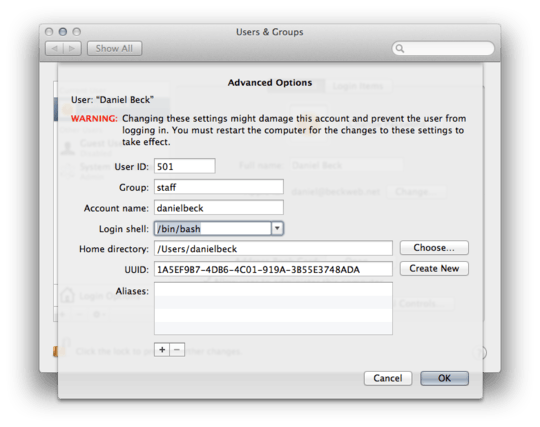90
34
I'm trying to change the Login Shell of Mac OS X from bash to zsh. I see it is possible in Mac OS X Leopard, but for OS X Lion I can't find a way. I really hope it is possible to change the Login shell from bash to something else. I am not exactly sure where to look for.

After changing shell to zsh, I still had to launch zsh manually. Logging out didn't help. I then changed zsh to the upmost login shell. Logged out and there it was. – None – 2011-12-01T16:06:30.637
1If nothing else, you can always modify the .bashrc to find and exec zsh.
if [ -x /usr/local/bin/zsh ] ; then exec /usr/local/bin/zsh fi. Hint, when modifying shell startup scripts, make sure to keep a shell running and start up a new one in another window - if you break it you still have an easy place to fix it. – Dan Pritts – 2013-09-30T13:23:56.483